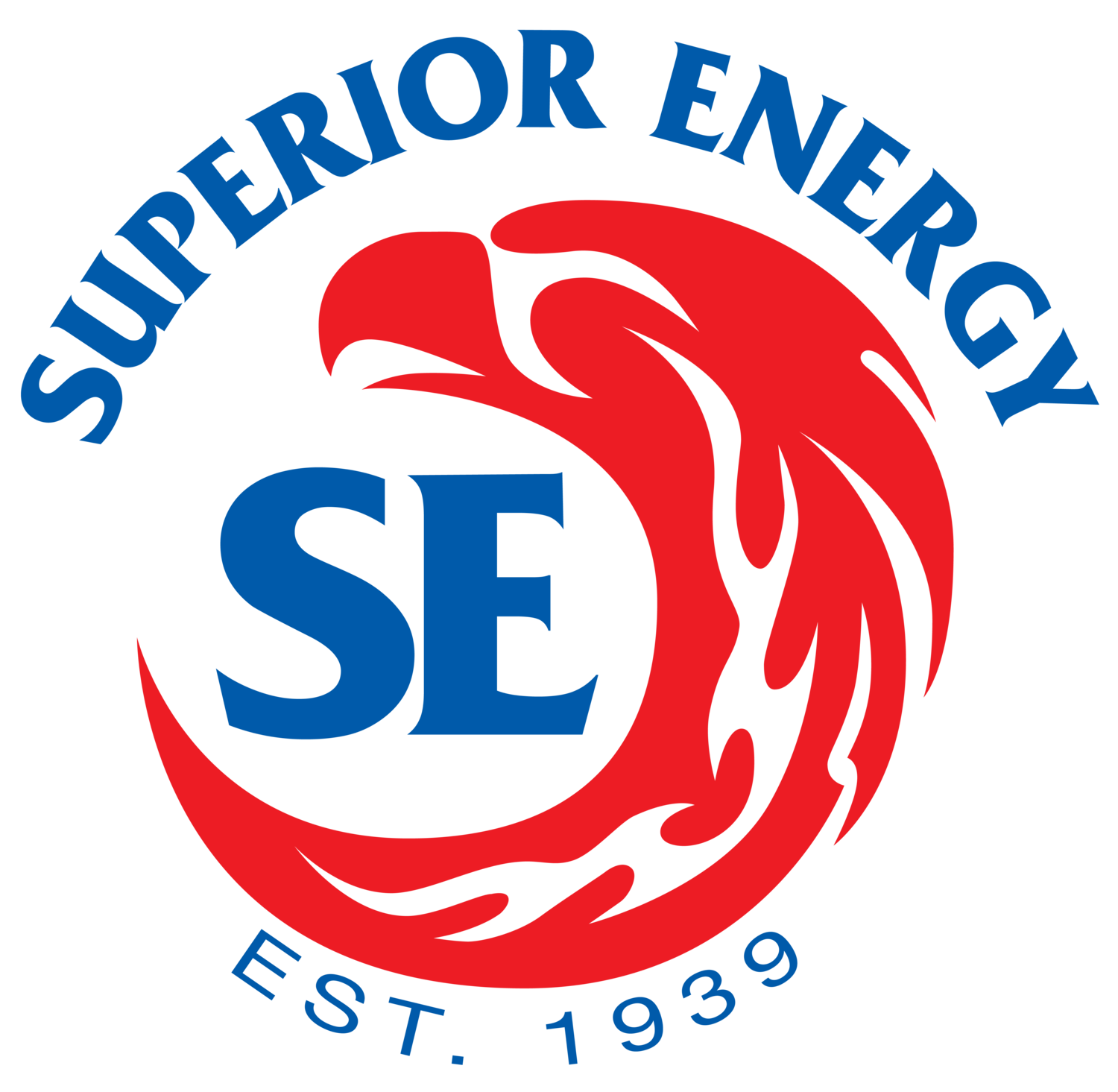Gas Grilling Safety Tips
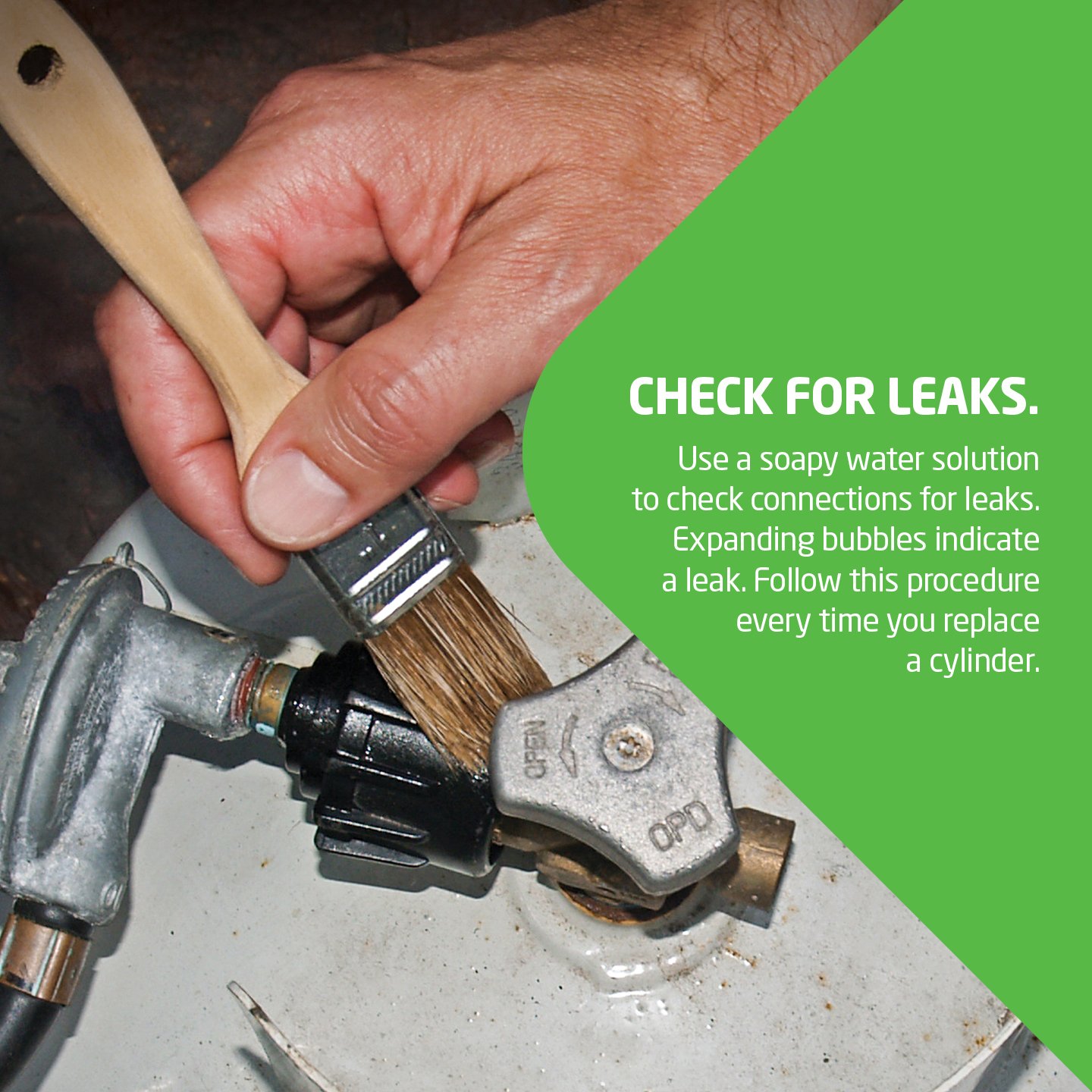
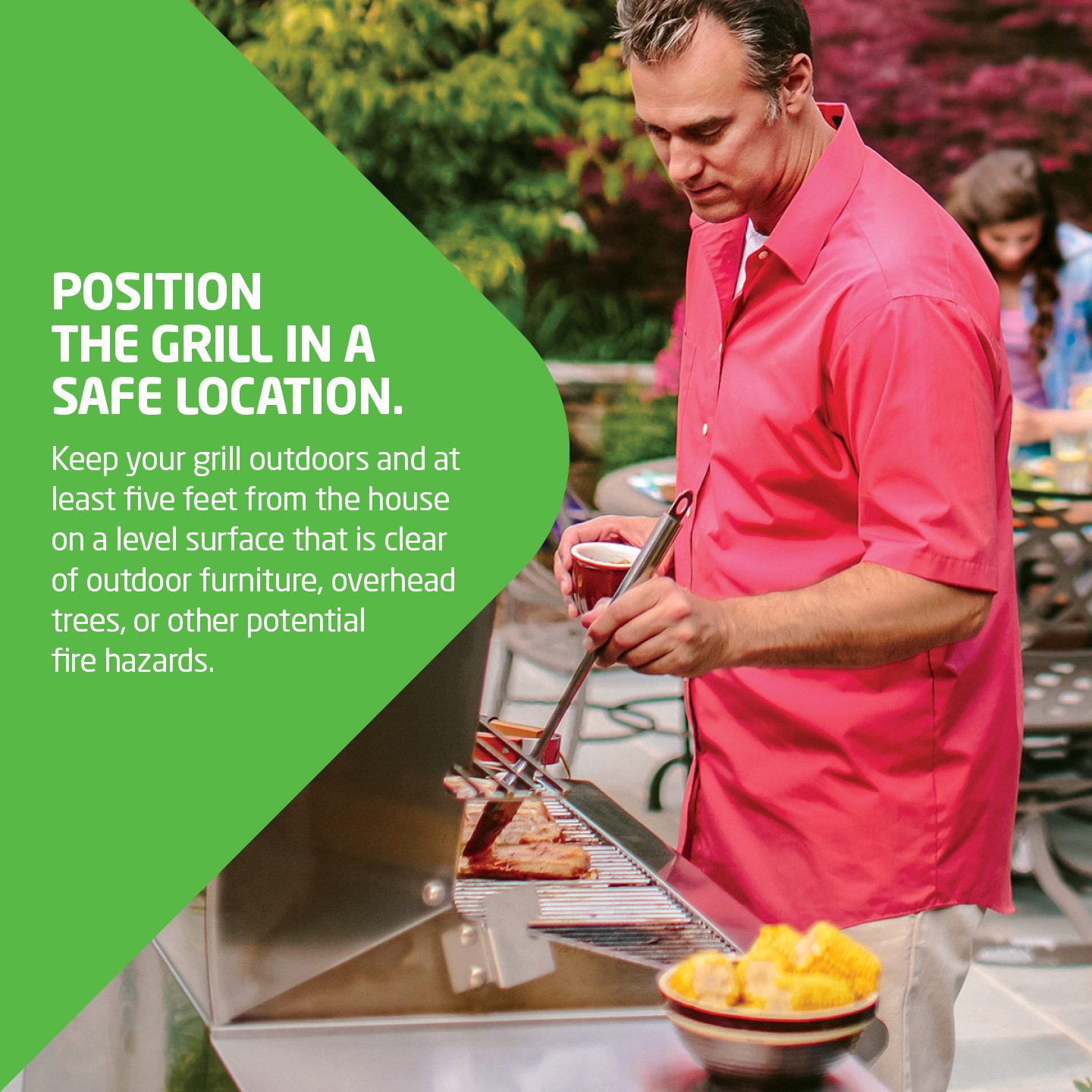
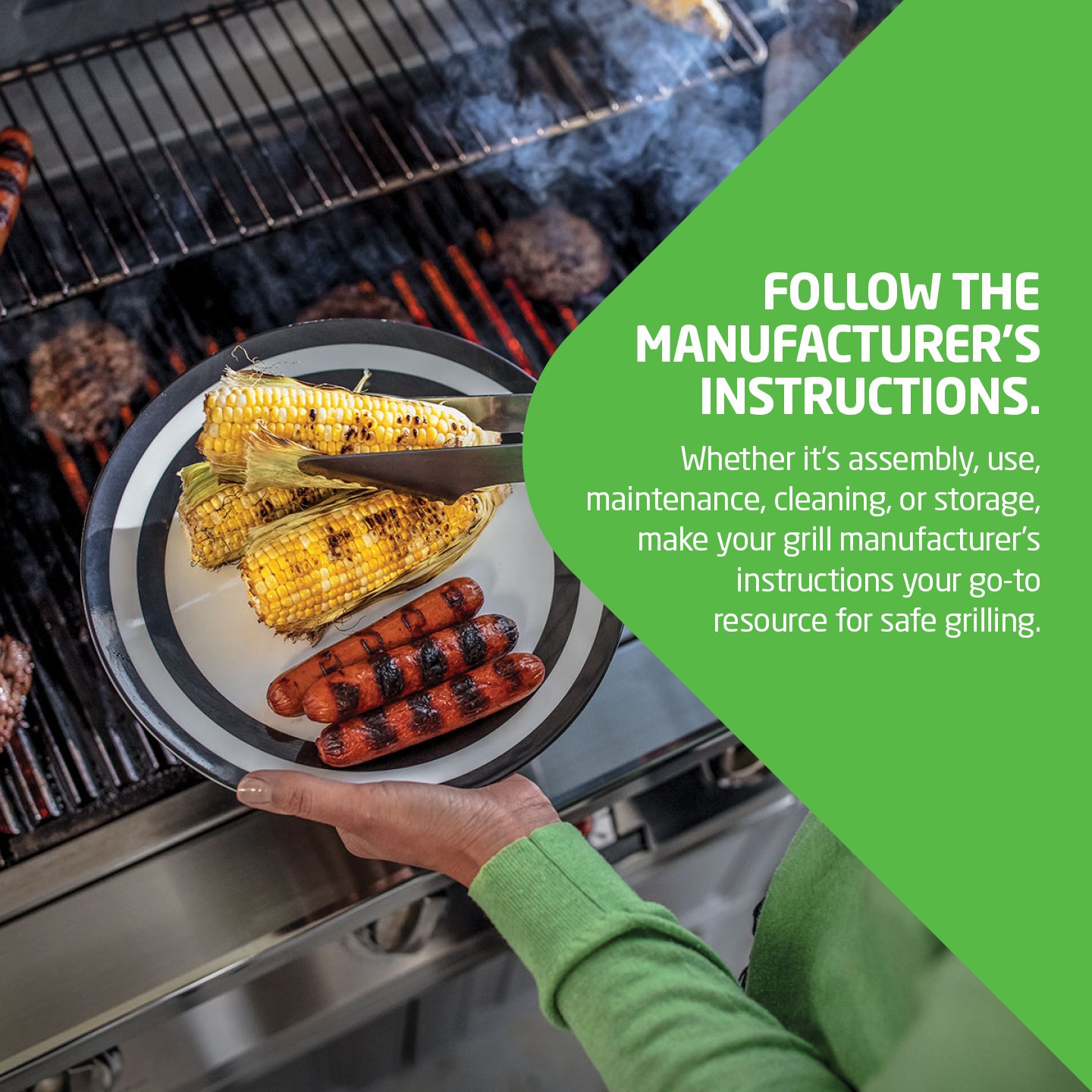
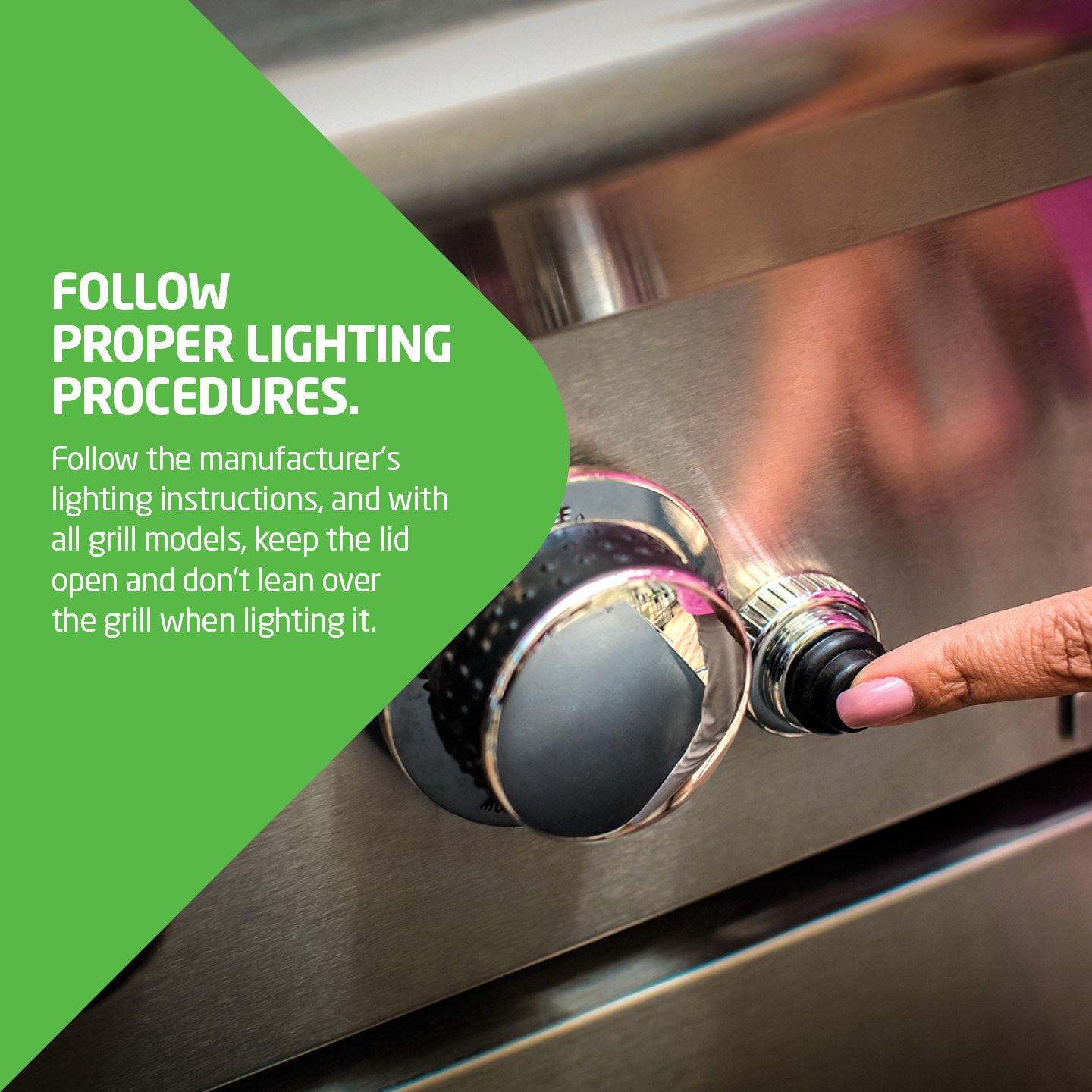
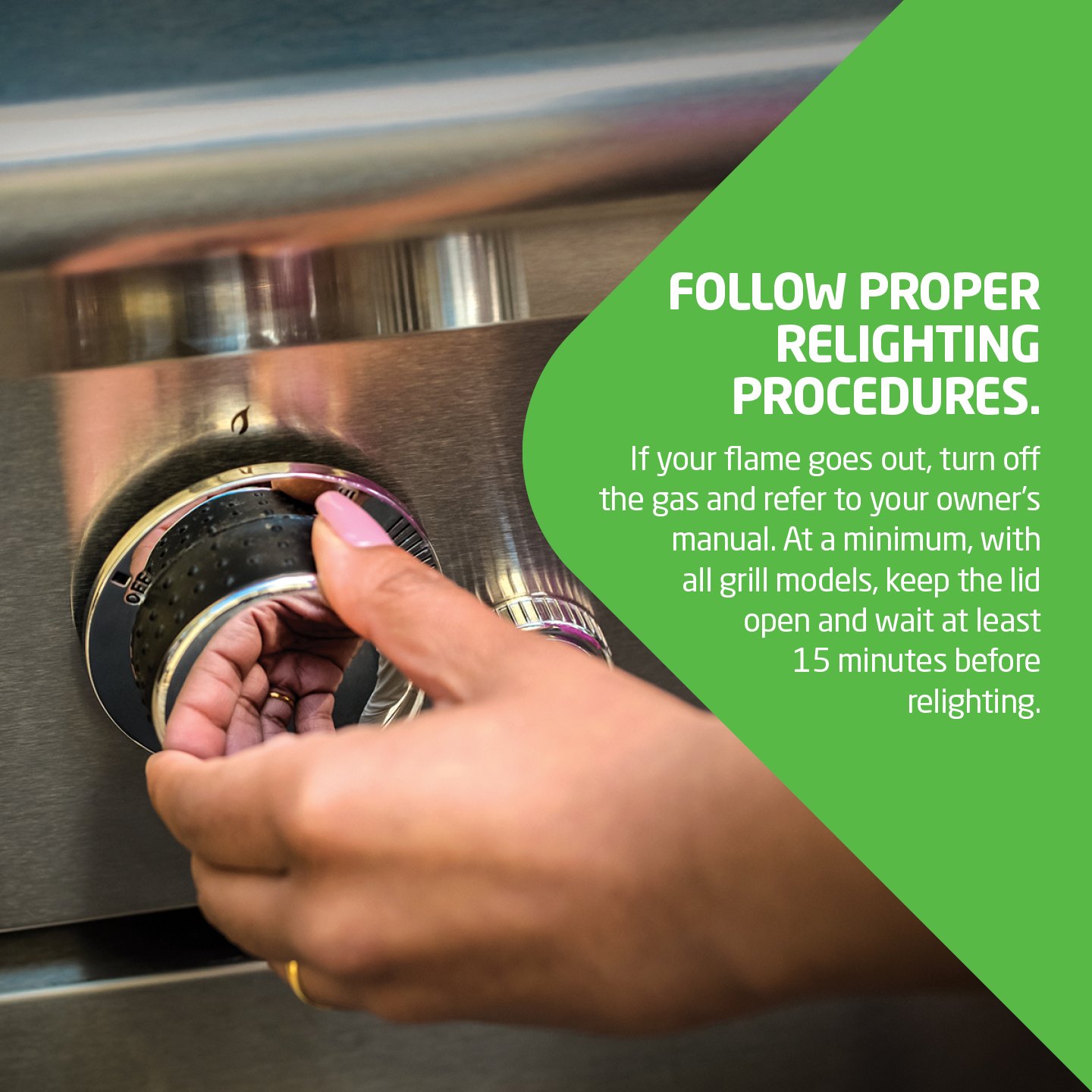
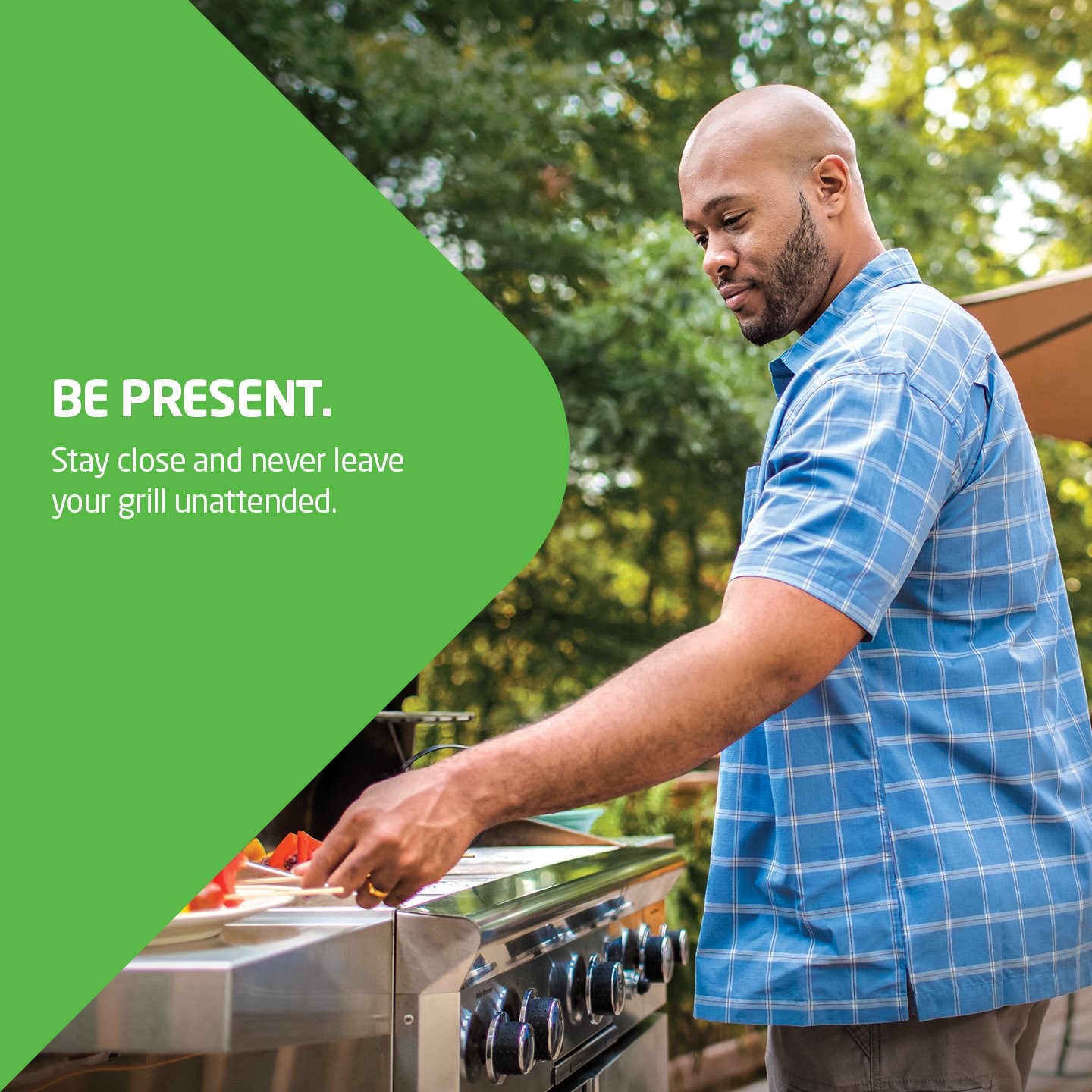
CHECK BBQ PROPANE TANK FOR LEAKS
Use a soapy water solution to check connections for leaks. Expanding bubbles indicate a leak. Follow this procedure every time you replace a cylinder.
Do not use a propane gas cylinder if it shows signs of external damage, such as dents, gouges, bulges, fire damage, corrosion, leakage, or excessive rust.
To see how much propane is left in your cylinder, run a wet finger down the side. The wet streak will evaporate faster over the empty part of the cylinder.
POSITION THE GRILL IN A SAFE LOCATION
Keep your grill outdoors and at least five feet from the house on a level surface that is clear of outdoor furniture, overhead trees, or other potential fire hazards.
Always grill in a well-ventilated area. Do not grill indoors or close to the side of a building.
Use foil or a drip pan to catch juices and help avoid grease fires.
FOLLOW THE MANUFACTURER'S INSTRUCTIONS
Whether it's assembly, use, maintenance, cleaning, or storage, make your grill manufacturer's instructions your go-to resource for safe grilling.
Before grilling, make sure the propane cylinder is secured to the grill as directed by the manufacturer.
FOLLOW PROPER LIGHTING PROCEDURES
Follow the manufacturer's lighting instructions, and with all grill models, keep the lid open.
Always open the grill hood before lighting and don't lean over the grill when lighting it.
Never use gasoline or kerosene to start the fire.
FOLLOW PROPER RELIGHTING PROCEDURES
If your flame goes out, turn off the gas and refer to your owner's manual.
At a minimum, with all grill models, keep the lid open and wait at least 15 minutes before relighting.
BE PRESENT
Stay close and never leave your grill unattended.
Since a hot grill is easier to clean than a cold grill, clean with a wire brush or scraper immediately after cooking, then wash off.
To turn the cylinder valve on or off, remember 'Rightie, tightie/Lefty, loosey.'
After grilling, the cylinder must NOT be stored indoors or within any enclosed space.
